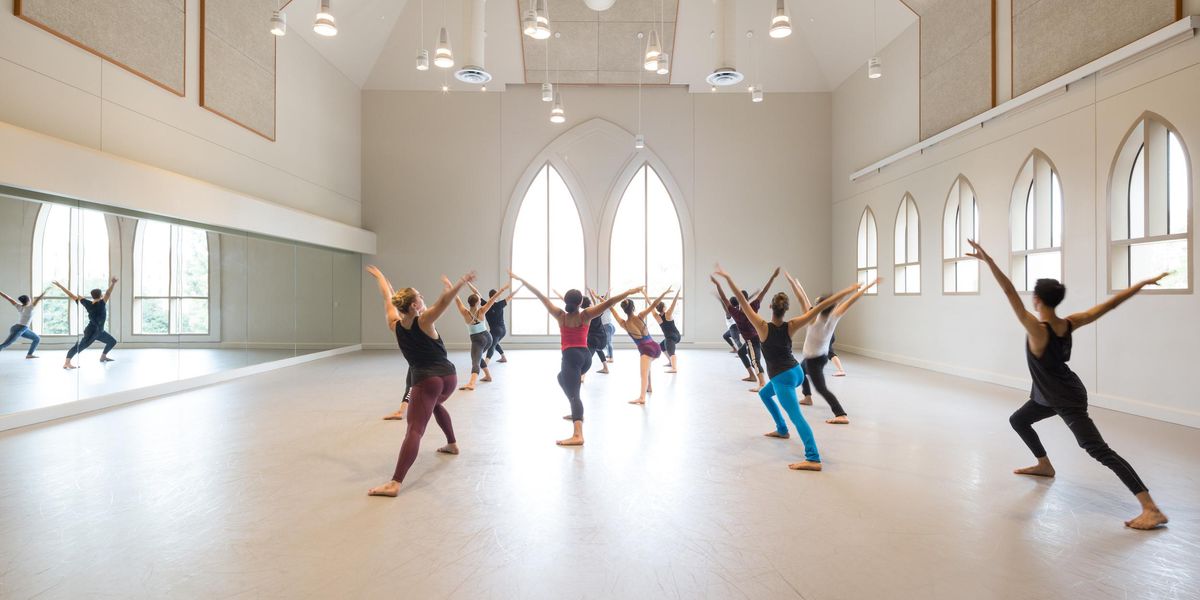British Dance Edition 2012
Various venues, London
February 2–5, 2012
It’s no mean feat to corral 35 companies or individual artists plus approximately 300 delegates from within the UK or abroad for three days of intensive dance-watching in seven London locations. But that’s what happened in early February at British Dance Edition. Nine presenting organizations joined forces for this version of the UK’s biennial dance platform.
The result was a selective Who’s Who of British dance as well as a potential shopping spree for the huge posse of promoters and programmers who’d come to sample their wares.
A sizable portion of the work on view was by leading lights from across the generations, with established names such as Richard Alston, Shobana Jeyasingh, Michael Clark, Wayne McGregor, and Hofesh Shechter at the forefront. But a spotlight was likewise cast upon emerging talent in such distinct and diverse fields as disability (Claire Cunningham, who uses crutches in her charming autobiographical solo Evolution) and South Asian dance (Aakash Odedra, currently being “sold” as a budding star à la Akram Khan). Ample space was also made for fusions of dance and technology, performance derived from street styles, and dance-theatre from the likes of Lost Dog (a duo whose show biz–steeped duet It Needs Horses was the controversial winner of the 2011 Place Prize), Luca Silvestrini’s Protein Dance (represented by an exceptionally savvy, bittersweet take on internet dating called LOL) and the somewhat wayward but original Frauke Requardt (whose jumbled, full-length production Episode—featuring terrorist clowns, raw live music, and a free-standing toilet—played itself out like a bad yet curiously memorable dream).
Hofesh Shechter’s
The Art of Not Looking Back. Photo by Dee Conway, Courtesy BDE.
Classical dance scarcely got a look in, principally confined to a quartet fashioned for Ballet Black by Alston protégé Martin Lawrance. The company, founded a decade ago by the enterprising Cassa Pancho, has steadily built a reputation for quality via a carefully commissioned repertoire designed to showcase a fluctuating group of dancers of black and Asian descent. Gradually emerging from his mentor’s shadow, Lawrance crafted a breakthrough duet for Ballet Black a few seasons back. Although at first sight his new work, Captured, may not seem as immediately compelling, it nevertheless possessed a burnished tension that perfectly suited its sleek cast of two couples caught in an unidentified but palpable internal conflict.
A couple of mid-scale troupes with longish histories demonstrated what strides they’ve been making of late. Founded nearly 30 years ago as Diversions, the recently re-branded National Dance Company Wales, based in Cardiff, showed off its flair and strength in By Singing Light, a big, impressively pyrotechnical piece created by Stephen Petronio and based on the poetry of Dylan Thomas. This wasn’t the first time the choreographer has made magic for NDCW, nor will it be the last: artistic director Ann Sholem has commissioned another work from him for 2013.
Candoco, Britain’s pioneering troupe of disabled and non-disabled dancers, helped celebrate its 20th birthday by securing a piece by Trisha Brown and then performing it on the stage of London’s premier dance venue (Sadler’s Wells) during BDE. Tailoring one of her most iconic dances to a mixed cast of seven, Set and Reset/Reset was a real feather in the company’s cap. The dancers negotiated the swing of Brown’s juicy, deceptively casual and loose-limbed writing with no little aplomb. If they occasionally lost their collective mojo, they certainly managed to re-find it by the time this adaptation of a slippery-smooth classic drew to a close.
Candoco was sandwiched on a triple bill between work by McGregor and Shechter. Made for his Random Dance Company, the former’s hour-long production FAR was here cut in half and still left me feeling antsy and frustrated. It looks great, sounds dreamy, and is extraordinarily well-danced, but McGregor’s relentlessly noodling, ungainly vocabulary no longer carries sufficient charge or surprise. I much preferred Shechter’s The Art of Not Looking Back, a female sextet predicated on the fact that the choreographer’s mother abandoned him when he was just 2 years old. The piece is more than an act of vengeance by an exceedingly self-aware and unforgiving cry-baby; its jagged structure seems to mirror Shechter’s broken feelings with a telling and universal truthfulness. The whole thing is carried along as much by his score of spoken word, rumbling percussion, and assaultive screaming as it is by the judderingly visceral, superbly attuned and tribal physicality of its cast.
Another highlight of BDE:12 was Wendy Houstoun. Formerly a close and invaluable collaborator with Lloyd Newson’s DV8, she has since forged a career as a soloist. Her new work 50 Acts may be her most engaging and impressive to date. Full of smartly ironic text constructed from the perspective of a mature woman taking stock of her life and her art, it finds Houstoun executing such oddball but meaningful actions as dodging around in a hard-hat, smashing old records with a hammer, or trying to locate the nearest dust mote. Lasting just under an hour, the piece is by turns hilarious, touching, charming and wise. It marks its creator as one of the most forthright and gifted independent performers of her generation.
Wendy Houstoun in
50 Acts. Photo by Chris Nash, Courtesy BDE.
Photo at top: Candoco in Trisha Brown’s
Set and Reset/Reset. Photo by Hugo Glendinning, Courtesy BDE.




